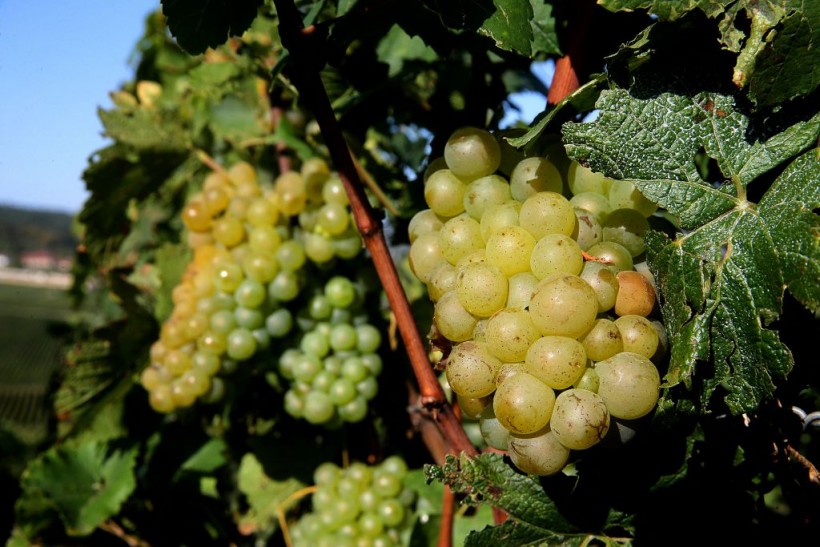Japan is known for its high-quality and expensive fruits, such as the Ruby Roman grapes that can sell for up to $11,000 per bunch.
However, the country's fruit industry is facing multiple challenges, such as climate change, labor shortage, aging farmers, and increasing competition from foreign imports.
How are Japan's fruit growers coping with these difficulties, and what are the prospects for the future of this sector?
Climate change threatens Japan's premium fruits
 (Photo : FRANCOIS NASCIMBENI/AFP via Getty Images)
(Photo : FRANCOIS NASCIMBENI/AFP via Getty Images)

One of the main challenges for Japan's fruit industry is the impact of climate change, which has caused erratic weather patterns, extreme temperatures, and natural disasters.
These factors affect the quality and quantity of fruits, as well as the timing of harvest and marketing.
For example, in 2023, Japan experienced a record-breaking heat wave in July, followed by torrential rains and floods in August.
These weather events damaged many fruit crops, especially grapes, which are sensitive to temperature and humidity changes.
According to the Japan Fruit Growers Cooperative Association, the production of grapes in 2023 was estimated to drop by 10% compared to the previous year.
Climate change also poses a threat to the cultivation of some of Japan's most iconic fruits, such as the Yubari melon and the Aomori apple.
These fruits require specific climatic conditions and soil quality to grow, and any deviation from these factors could compromise their flavor and appearance.
For instance, the Yubari melon, which is grown in greenhouses in Hokkaido, needs a temperature difference of at least 15 degrees Celsius between day and night to develop its sweetness and aroma.
However, as the average temperature in Hokkaido rises, this difference becomes harder to achieve.
To cope with the effects of climate change, some fruit growers are adopting various measures, such as adjusting the planting and harvesting dates, using protective nets and covers, installing cooling and heating systems, and developing new varieties that are more resilient to weather changes.
However, these measures entail additional costs and labor, which could further strain the profitability and sustainability of the industry.
Also Read: Better Eye Health Achieved Through 16 Weeks of Eating Grapes, Study Says
Japan's fruit industry faces increasing competition from foreign imports
A challenge for Japan's fruit industry is the increasing competition from foreign imports, which have become more accessible and affordable for Japanese consumers, thanks to the free trade agreements that Japan has signed with various countries and regions, such as the Comprehensive and Progressive Agreement for Trans-Pacific Partnership (CPTPP) and the Economic Partnership Agreement (EPA) with the European Union.
According to the Japan External Trade Organization, the value of fresh fruit imports to Japan increased by 13% from 2016 to 2020, reaching US$2.4 billion in 2020.
The main sources of fresh fruit imports were the Philippines, the United States, New Zealand, Chile, and South Korea.
Some of the fruits that Japan imports in large quantities are bananas, pineapples, kiwis, oranges, and grapefruits, which are either not produced or not enough in Japan.
The foreign imports pose a threat to Japan's fruit industry, as they offer a wider variety and lower prices than the domestic fruits.
For example, a bunch of bananas from the Philippines can cost as little as 100 yen, while a single apple from Aomori can cost up to 500 yen.
Moreover, some foreign fruits have improved their quality and taste, making them more appealing to Japanese consumers, who are known for their discerning palates.
To compete with the foreign imports, some fruit growers are focusing on enhancing the quality and uniqueness of their products, by emphasizing their origin, variety, cultivation method, and certification.
For example, some growers are branding their fruits with geographical indications, such as the Yubari melon from Hokkaido, the Shine Muscat grape from Okayama, and the Dekopon mandarin from Ehime.
These fruits are known for their distinctive flavor, appearance, and premium price, which attract both domestic and foreign consumers.
Some fruit growers are also expanding their market and distribution channels, by selling their fruits online, through subscription services, or directly to consumers at farmers' markets and roadside stalls.
These strategies allow the growers to reach a wider and more diverse customer base, as well as to reduce the intermediaries and the transportation costs involved in the supply chain.
Related article: Animal-Free Leather Shoes and Handbags Made from Grapes and Mushroom on the Rise
© 2024 NatureWorldNews.com All rights reserved. Do not reproduce without permission.

![Tsunami Hazard Zones: New US Map Shows Places at Risk of Flooding and Tsunamis Amid Rising Sea Levels [NOAA]](https://1471793142.rsc.cdn77.org/data/thumbs/full/70325/280/157/50/40/tsunami-hazard-zones-new-us-map-shows-places-at-risk-of-flooding-and-tsunamis-amid-rising-sea-levels-noaa.jpg)



